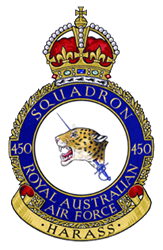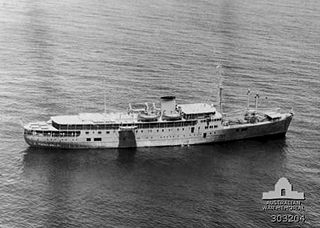Related Research Articles

Walter Peeler, was an Australian recipient of the Victoria Cross, the highest award for gallantry "in the face of the enemy" that can be awarded to members of the British and Commonwealth armed forces. He was decorated following his actions during the Battle of Broodseinde in October 1917. Then a lance corporal in the Australian Imperial Force, he repeatedly took the lead in the 37th Battalion's advance on well-defended German positions, destroying four machine gun posts and killing more than 30 German soldiers during the battle.

The Borneo campaign or Second Battle of Borneo was the last major Allied campaign in the South West Pacific Area during World War II to liberate Japanese-held British Borneo and Dutch Borneo. Designated collectively as Operation Oboe, a series of amphibious assaults between 1 May and 21 July 1945 were conducted by the Australian I Corps, under Lieutenant-General Leslie Morshead, against Imperial Japanese forces who had been occupying the island since late 1941 – early 1942. The main Japanese formation on the island was the Thirty-Seventh Army under Lieutenant-General Masao Baba, while the naval garrison was commanded by Vice-Admiral Michiaki Kamada. The Australian ground forces were supported by US and other Allied air and naval forces, with the US providing the bulk of the shipping and logistic support necessary to conduct the operation. The campaign was initially planned to involve six stages, but eventually landings were undertaken at four locations: Tarakan, Labuan, North Borneo and Balikpapan. Guerilla operations were also carried out by Dayak tribesmen and small numbers of Allied personnel in the interior of the island. While major combat operations were concluded by mid-July, localised fighting continued throughout Borneo until the end of the war in August. Initially intended to secure vital airfields and port facilities to support future operations, preparatory bombardment resulted in heavy damage to the island's infrastructure, including its oil production facilities. As a result, the strategic benefits the Allies gained from the campaign were negligible.

Operation Rimau was an attack on Japanese shipping in Singapore Harbour, carried out by an Allied commando unit Z Special Unit, during World War II using Australian built Hoehn military MKIII folboats. It was a follow-up to the successful Operation Jaywick which had taken place in September 1943, and was again led by Lieutenant Colonel Ivan Lyon of the Gordon Highlanders, an infantry regiment of the British Army.

Australia entered World War II on 3 September 1939, following the government's acceptance of the United Kingdom's declaration of war on Nazi Germany. Australia later entered into a state of war with other members of the Axis powers, including the Kingdom of Italy on 11 June 1940, and the Empire of Japan on 9 December 1941. By the end of the war, almost a million Australians had served in the armed forces, whose military units fought primarily in the European theatre, North African campaign, and the South West Pacific theatre. In addition, Australia came under direct attack for the first time in its post-colonial history. Its casualties from enemy action during the war were 27,073 killed and 23,477 wounded. Many more suffered from tropical disease, hunger, and harsh conditions in captivity; of the 21,467 Australian prisoners taken by the Japanese, only 14,000 survived.

No. 450 Squadron was a unit of the Royal Australian Air Force (RAAF) that operated during World War II. Established at RAAF Station Williamtown, New South Wales, in February 1941, it was the first Australian Article XV squadron formed under the Empire Air Training Scheme.

The Salamaua–Lae campaign was a series of actions in the New Guinea campaign of World War II. Australian and United States forces sought to capture two major Japanese bases, one in the town of Lae, and another one at Salamaua. The campaign to take the Salamaua and Lae area began after the successful defence of Wau in late January, which was followed up by an Australian advance towards Mubo as the Japanese troops that had attacked Wau withdrew to positions around Mubo. A series of actions followed over the course of several months as the Australian 3rd Division advanced north-east towards Salamaua. After an amphibious landing at Nassau Bay, the Australians were reinforced by a US regimental combat team, which subsequently advanced north up the coast.

No. 78 Squadron was a Royal Australian Air Force (RAAF) fighter squadron of World War II. It was formed in July 1943 as part of expansion of the RAAF's fighter force, and was assigned to mobile striking forces for the duration of the war.

Air Vice Marshal William Dowling Bostock, was a senior commander in the Royal Australian Air Force (RAAF). During World War II he led RAAF Command, the Air Force's main operational formation, with responsibility for the defence of Australia and air offensives against Japanese targets in the South West Pacific Area. His achievements in the role earned him the Distinguished Service Order and the American Medal of Freedom. General Douglas MacArthur described him as "one of the world's most successful airmen".

The landing at Saidor, codenamed Operation Michaelmas, was an Allied amphibious landing at Saidor, Papua New Guinea on 2 January 1944 as part of Operation Dexterity during World War II. In Allied hands, Saidor was a stepping stone towards Madang, the ultimate objective of General Douglas MacArthur's Huon Peninsula campaign. The capture of the airstrip at Saidor also allowed construction of an airbase to assist Allied air forces to conduct operations against Japanese bases at Wewak and Hollandia. But MacArthur's immediate objective was to cut off the 6,000 Imperial Japanese troops retreating from Sio in the face of the Australian advance from Finschhafen.

The 2/6th Commando Squadron was one of 12 independent companies or commando squadrons raised by the Australian Army during the Second World War. Raised in May 1942 as the 2/6th Independent Company, the 2/6th's main role was to conduct irregular type warfare including small scale raiding, sabotage, long-range patrolling and reconnaissance operations rather than the traditional commando type direct action operations. As such, for the most part the unit conducted operations in small groups operating inside enemy territory, or out in front of larger friendly forces. Between 1942 and 1945, the 2/6th undertook four major campaigns during the war—Kokoda, Buna, Markham–Ramu and Borneo—and was involved in arguably one of the most spectacular small unit actions of the war during the Battle of Kaiapit. The unit was disbanded in January 1946, following the cessation of hostilities in the Pacific.

The 2/10th Commando Squadron was a commando unit raised by the Australian Army for service in World War II. Raised in 1944, the unit saw action late in the war against the Japanese during the Aitape–Wewak campaign. During this campaign the squadron carried out a number of tasks including long-range patrols, flank protection and area defence. Later in the campaign the 2/10th were used to spearhead an amphibious assault landing at Dove Bay, east of Wewak before being used as line infantry during the final 'mopping up' stages of the campaign. Following the end of the war the unit was disbanded.

The 2/31st Battalion was an infantry battalion of the Australian Army that served during World War II. It was raised in June 1940 and was assigned to the 25th Brigade, 7th Division. It initially served in the United Kingdom where it undertook defensive duties before being moved to the Middle East in 1941. After taking part in the fighting in Syria and Lebanon, the battalion undertook garrison duties around Tripoli before being transferred back to Australia in 1942. In late 1942 the battalion was sent to New Guinea to fight against the Japanese along the Kokoda Track. They subsequently fought a number of battles throughout 1942, 1943 and early 1944. Their last campaign came in mid-1945 when they landed on Borneo. After the war the battalion was disbanded in March 1946.

The 2/17th Battalion was an infantry battalion of the Australian Army. Raised in April 1940 in New South Wales, it formed part of the 20th Brigade, and was eventually allocated to the 9th Division. After completing basic training in Australia, the unit was deployed to the Middle East. In early 1941, it took part in the fighting at Tobruk, defending the port until relieved. A period of garrison duties followed in Syria and Lebanon before the battalion took part in the First and Second Battles of El Alamein in mid-1942. As the focus of the Australian Army's operations shifted to the Pacific theatre to fight the Japanese, the 2/17th Battalion returned to Australia early in 1943.

The 2/14th Battalion was an infantry battalion of the Australian Army that served during World War II. Part of the 21st Brigade, 7th Division, the battalion was raised from Second Australian Imperial Force volunteers drawn mainly from the state of Victoria. After completing training in Australia in 1940, the battalion deployed to the Middle East where it was stationed in Egypt and Palestine before it saw action against the Vichy French in Syria in June and July 1941, in a short lived campaign. Garrison duties in Lebanon followed before the battalion was withdrawn to Australia in early 1942 as Australian forces were concentrated in the Pacific to respond to the threat posed by Japan's entry into the war.

Don Isidro, delivered in 1939, was the second and larger of two Krupp built motor ships of De La Rama Steamship Company, Iloilo, Philippines in inter-island service. The ship under a time charter by the United States Army as a transport during the Japanese invasion of the Philippines. As defending forces became cut off from supply by the Japanese blockade Don Isidro was one of eight ships, only three of which were successful, known to make an attempt to run the blockade. In that attempt, under her captain Rafael J. Cisneros, Don Isidro became involved in the 19 February Japanese attack on Darwin, Australia where, though not in the port, she was strafed, bombed and left off Bathurst Island burning with all lifeboats destroyed. The captain attempted to make land when she grounded about three miles off Melville Island to which survivors swam. Of the sixty-seven crew and sixteen soldiers aboard eleven of the crew and one soldier were killed or missing. Survivors were rescued by HMAS Warrnambool, taken to Darwin, treated at the hospital and then awaited orders at the 147th Field Artillery camp.
Operation Whiting was a military operation by Dutch and Australian forces during World War II in New Guinea by M Special Unit. It ran in conjunction with Operation Locust, and resulted in the capture and execution of Leonard Siffleet in October 1943, producing one of the most famous photographs of the war.
Operation Adder was a military operation conducted by Australia's Services Reconnaissance Department in Timor during World War II in August 1944. A party consisting of two Australian soldiers, Captain John Grimson and signaller Ernest Gregg, and three Portuguese Timorese, was dropped on Timor.
Operation Cobra was a military operation by Australia's Services Reconnaissance Department during World War II in Timor in 1944. A team of five soldiers were inserted on to Japanese occupied Timor
Operation Sunlag was an Australian military operation in Timor during World War II. Its aim was to investigate what happened to Operation Lagarto.
Operation Sunbaker was a military operation by the Services Reconnaissance Department of Australian Army in Timor in May 1945. The aim was to insert a team of operatives behind enemy lines. A B-24 Liberator A72-159 of 200 Flight RAAF taking the team was shot down on 17 May near Dili with the loss of all on board.